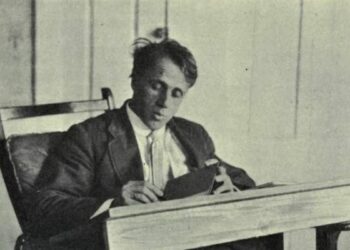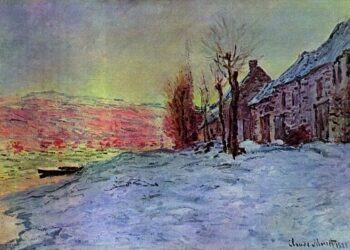Table of Contents
ToggleLift Every Voice and Sing Summary Analysis
Lift Every Voice and Sing Analysis, Lift Every Voice and Sing Plot Summary, What is the main idea of the poem Lift Every Voice and Sing?,Lift Every Voice and Sing Plot Summary, What is the main idea of the poem Lift Every Voice and Sing?, What is the story behind Lift Every Voice and Sing?,
Lift Every Voice and Sing Summary AnalysisLift Every Voice and Sing is a potent and well-known poem by James Weldon Johnson. It was first written as a poem and later put to music by John Rosamond Johnson, Johnson’s brother. The poem’s importance in African American history and culture has led to it being referred to as the Black National Anthem frequently.
Lift Every Voice and Sing Summary
“Lift every voice and sing, The poem begins with a call to action, urging everyone to raise their voices in song. The act of lifting voices signifies unity and a collective expression, inviting people to join together in a powerful chorus.
Till earth and heaven ring, The call to sing is not just a mere suggestion; it is a call for resonance that reverberates through both the earthly and heavenly realms. The aspiration is for the song to echo across the entire universe.
Ring with the harmonies of Liberty; The desired sound is not just any melody but one that resonates with the harmonies of liberty. The idea is to create a song that embodies the principles of freedom and justice.
Let our rejoicing rise The call to rejoice is an integral part of the anthem, emphasizing the significance of celebrating achievements, resilience, and progress. The rising of rejoicing suggests an upward movement, symbolizing progress and hope.
High as the listening skies, The rejoicing is encouraged to ascend as high as the skies, indicating the vastness and boundless potential of the celebration. The skies, as listeners, become witnesses to the collective joy.
Let it resound loud as the rolling sea. The desire for the rejoicing to resound as loudly as the rolling sea amplifies the call for a grand and impactful celebration. The comparison to the sea adds an element of magnitude and strength.
Sing a song full of the faith that the dark past has taught us, The poem acknowledges the challenges of the past but encourages the singing of a song infused with faith. This faith is not blind; rather, it is rooted in the lessons learned from the struggles and hardships of history.
Sing a song full of the hope that the present has brought us; Building upon the faith instilled by the past, the anthem calls for a song that is also rich in hope, acknowledging the positive developments and progress achieved in the present.
Facing the rising sun of our new day begun, The imagery of the rising sun symbolizes the beginning of a new era. The anthem looks forward to a future filled with promise, where the sun represents the dawning of a brighter day.
Let us march on till victory is won. The call to march on echoes the resilience and determination to strive for victory. It’s a rallying cry, urging the community to continue the journey until ultimate success is achieved.
Stony the road we trod, The anthem confronts the challenges faced by the African American community, describing the path as stony. This imagery acknowledges the hardships and obstacles encountered on the road to freedom and equality.
Bitter the chastening rod, The mention of the chastening rod refers to the painful experiences of oppression and discrimination faced by the community. It acknowledges the bitterness of the struggles endured.
Felt in the days when hope unborn had died; The anthem reflects on a time when hope seemed to be extinguished, emphasizing the difficulty faced during periods when the prospects for positive change appeared bleak.
Yet with a steady beat, Despite the adversities, there is a resilient and unwavering rhythm. The steady beat suggests a determination to persevere even in the face of challenges.
Have not our weary feet, The weariness of the feet symbolizes the fatigue accumulated from the long and arduous journey. However, the fact that they have not stumbled suggests a resilient and persistent spirit.
Come to the place for which our fathers sighed? The reference to the place for which the fathers sighed signifies the yearning for freedom, justice, and equality that has been passed down through generations. It is a collective aspiration.
We have come over a way that with tears has been watered, The journey is acknowledged as one marked by tears and sorrow. The imagery of tears being watered suggests a poignant and emotional history that has shaped the community’s narrative.
We have come, treading our path through the blood of the slaughtered, The path taken by the Lift Every Voice and Sing Summary Analysis-community is further described as one traversed through bloodshed and sacrifice. This vivid imagery highlights the high cost paid for the pursuit of freedom and equality.
Also Read-
- Deep analysis of Listening Poem Summary by Amy Lowell
- Spring poem Summary and Analysis
- The heart asks pleasure first poem analysis
Out from the gloomy past, The anthem acknowledges the darkness of the past but asserts that the community has emerged from that gloomy history. It implies progress and a departure from the oppressive shadows.
Till now we stand at last The journey, marked by struggle and sacrifice, has led to a moment of standing tall and proud. “Till now” signifies a culmination, a point in history where the community stands united.
Where the white gleam of our bright star is cast. The bright star symbolizes a guiding light, perhaps representing the realization of dreams and aspirations. Its white gleam signifies purity and hope.
God of our weary years, The anthem invokes a divine presence, addressing God as the one who has witnessed the weariness accumulated over the years. This appeals to a higher power for guidance, strength, and justice.
God of our silent tears, The mention of silent tears suggests the unspoken pain and suffering endured. The anthem seeks solace and understanding from a compassionate deity.
Thou who hast brought us thus far on the way; Acknowledging the divine guidance that has brought the community to this point, the anthem expresses gratitude for the progress achieved.
Thou who hast by Thy might, The use of divine might underscores the power and strength needed to overcome the challenges faced by the community. It emphasizes the role of divine intervention in shaping the journey.
Led us into the light, The divine guidance is portrayed as leading the community into the light. This imagery conveys a sense of enlightenment, liberation, and a departure from darkness.
Keep us forever in the path, we pray. The anthem seeks continuous divine guidance, requesting to be kept forever on the path of progress, justice, and equality. It is an expression of hope for a sustained and righteous journey.
Lest our feet stray from the places, our God, where we met Thee. Fearing a deviation from the righteous path, the anthem implores divine intervention to prevent the community from straying away from the places where they first encountered the divine.
Lest our hearts, drunk with the wine of the world, we forget Thee; The metaphor of hearts being drunk with the wine of the world suggests a vulnerability to worldly distractions and influences. The anthem prays for a reminder of the divine presence amid the temptations and distractions of the world.
Shadowed beneath Thy hand, The imagery of being shadowed beneath God’s hand conveys a sense of protection, guidance, and shelter. It emphasizes the divine presence as a constant source of support.
May we forever stand, The anthem expresses a desire for enduring strength and resilience. The call is for the community to stand forever, symbolizing a commitment to lasting principles of justice and equality.
True to our God, true to our native land. The anthem concludes with a commitment to remain true to both God and the native land. This dual allegiance signifies a harmonious relationship between spiritual values and a commitment to the welfare and progress of the community and the nation.
Conclusion
“Lift Every Voice and Sing” is a poignant and powerful anthem that encapsulates the history, struggles, and aspirations of the African American community. Authored by James Weldon Johnson, this hymn has become a cultural touchstone, recognized as the Black National Anthem, resonating with themes of resilience, progress, and the enduring pursuit of justice and equality.
Lift Every Voice and Sing Summary Analysis-The anthem’s journey through vivid imagery, religious undertones, and a rich narrative portrays a community’s unwavering commitment to hope, faith, and the continuous pursuit of a more just and inclusive society.
Through its invocation of God, acknowledgment of past sorrows, and the commitment to remaining true to both the divine and the native land, the anthem serves as a timeless and powerful expression of identity, unity, and purpose.Lift Every Voice and Sing Analysis, Lift Every Voice and Sing Plot Summary, What is the main idea of the poem Lift Every Voice and Sing?,Lift Every Voice and Sing Plot Summary, What is the main idea of the poem Lift Every Voice and Sing?, What is the story behind Lift Every Voice and Sing?,
FAQ:
1. Who wrote “Lift Every Voice and Sing”?
“Lift Every Voice and Sing” was written by James Weldon Johnson. Initially composed as a poem in 1900, it was later set to music by Johnson’s brother, John Rosamond Johnson.
2. Why is “Lift Every Voice and Sing” considered significant?
“Lift Every Voice and Sing” is considered significant for several reasons. It serves as a powerful anthem for the African American community, celebrating resilience, progress, and the enduring pursuit of justice and equality. Its recognition as the Black National Anthem underscores its cultural and historical importance.
3. What is the significance of the title “Lift Every Voice and Sing”?
The title is a call to action, urging everyone to raise their voices in song. It signifies unity, a collective expression, and a call for resonance that reverberates through both earthly and heavenly realms.
4. What historical events or themes does the poem address?
The poem addresses the historical struggles of the African American community, including slavery, oppression, and the ongoing fight for civil rights. It speaks to the resilience and progress made, celebrating achievements while acknowledging the challenges faced.
5. How does the poem use religious imagery?
The poem incorporates religious imagery by invoking God and seeking divine guidance. The references to God emphasize the importance of faith, hope, and a commitment to righteousness in the face of adversity.

















